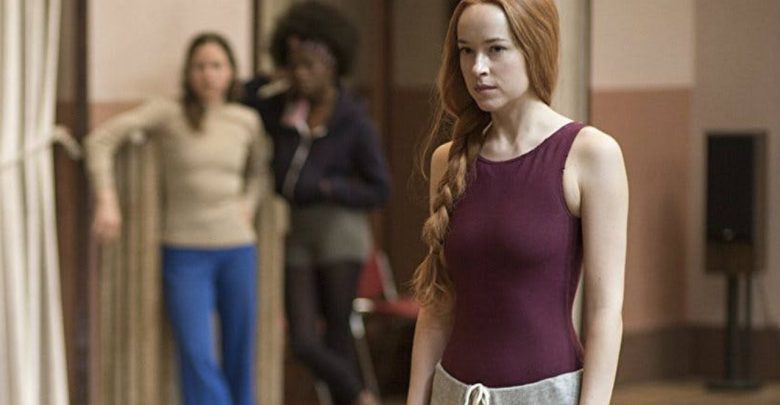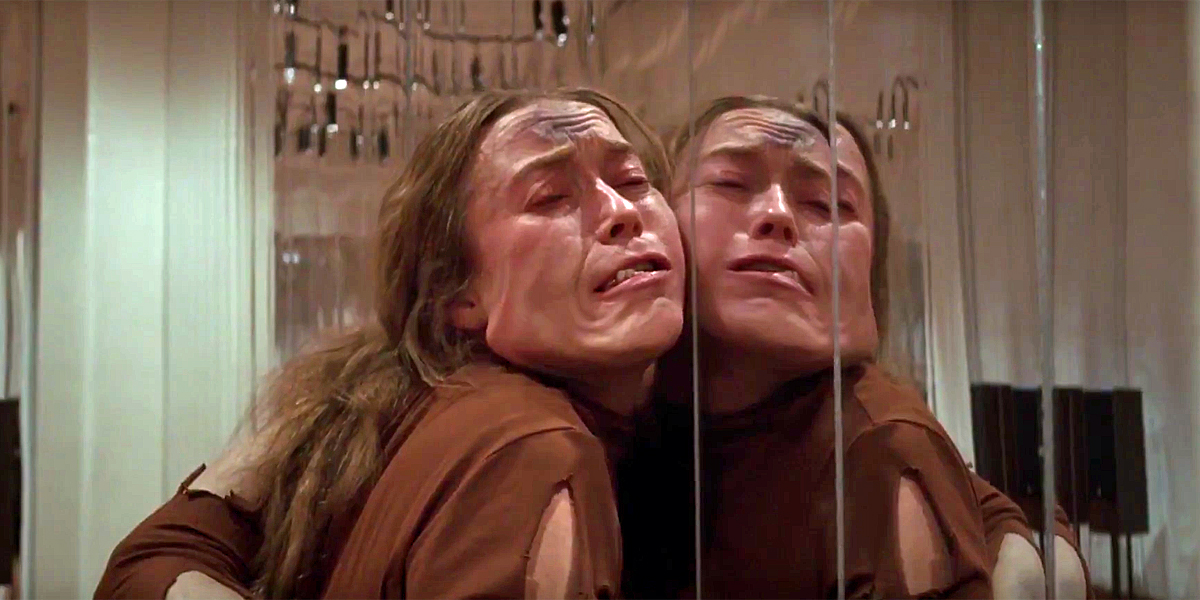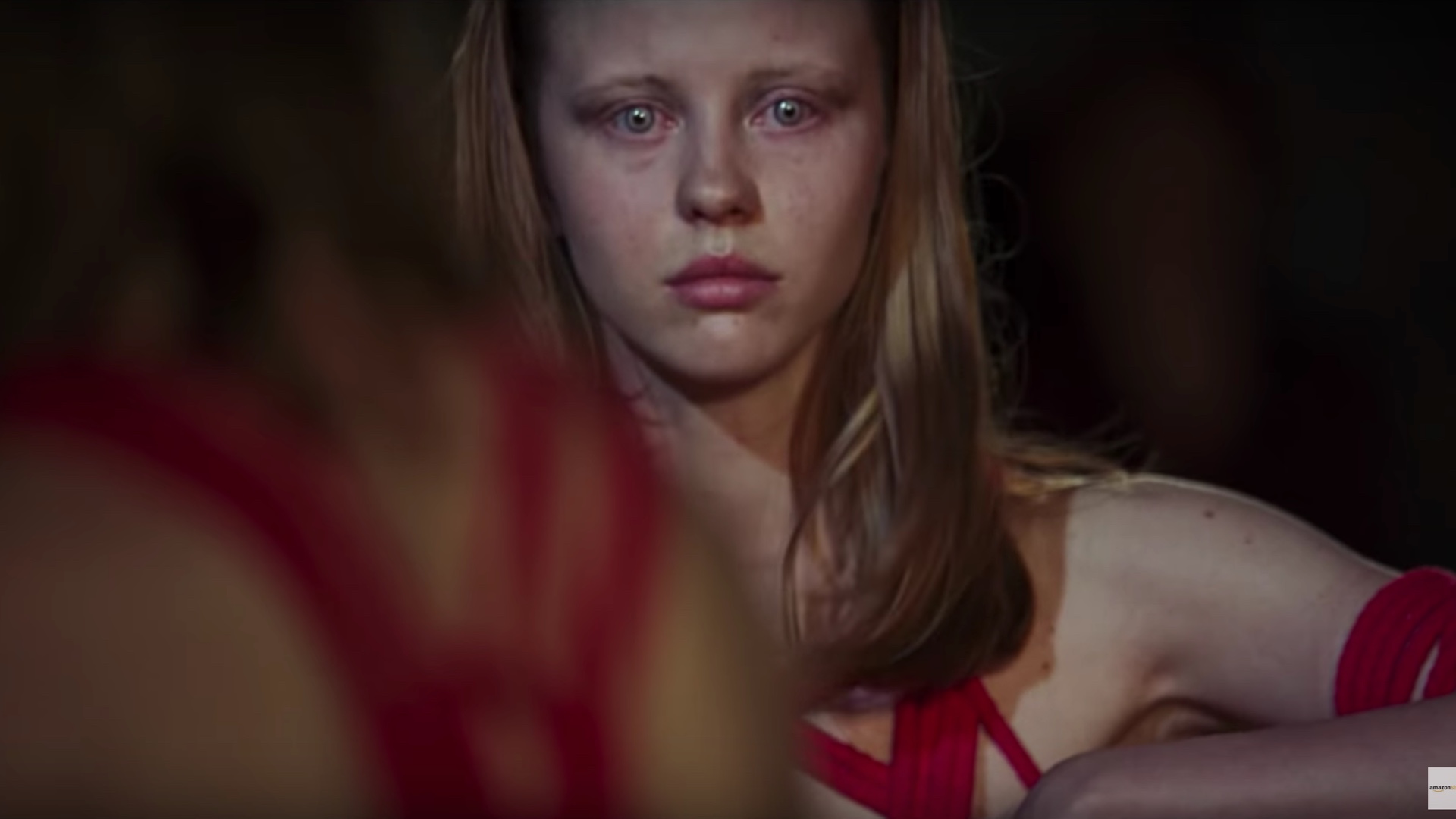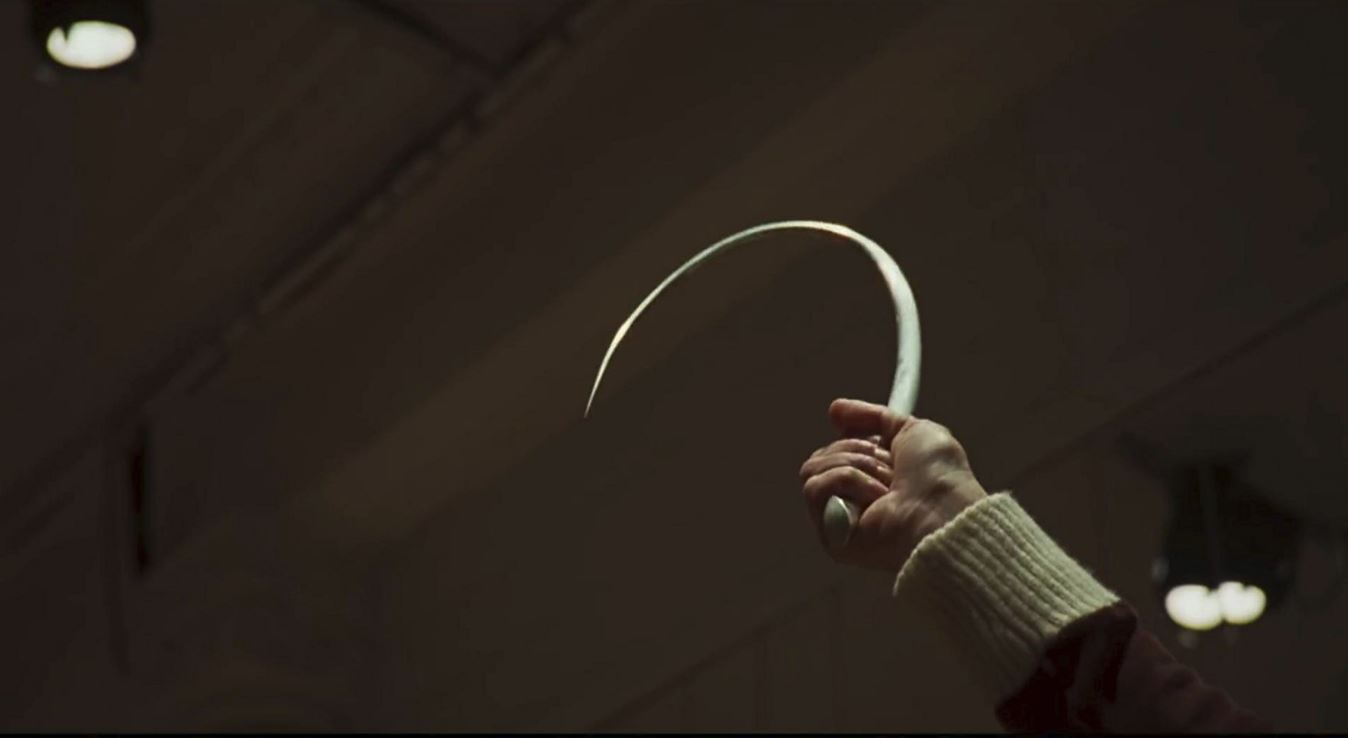Infamously, Gus Van Sant once made a shot-by-shot remake of Alfred Hitchcock’s Psycho. As remakes go, that’s at one far end of the spectrum of fidelity to the source material. Luca Guadagnino is at the other end with his remake of Suspiria, Dario Argento’s 1977 horror film that is considered one of the most famous examples of Italy’s giallo genre (or not an example of it at all, depending on whom you ask). The basic clay of Guadagnino’s movie is clearly Argento’s original, but he deviates from it in ways that are bold, challenging – and ultimately unsuccessful.
It’s difficult to consider a film like this without a point-by-point comparison between the remake and the original, but that eats up a lot of words and isn’t all that useful if you haven’t seen the original. It is worth making quick mention of a handful of things Guadagnino had to or chose to abandon, to the detriment of his remake: 1) the haunting original score by the band Goblins; 2) the deeply saturated colours of Argento’s film stock; 3) the opening kill that sets the stage in Argento’s film; and 4) Argento’s economical 98-minute running time. Other changes qualify as spoilers and will not be revealed here.
The biggest of those problems is the addition of 54 minutes to the running time, an unfortunately typical example of the type of bloat that has crept into modern movie-making. You’re more likely to see a movie that is two hours and 30 minutes these days than one that is 90 minutes, and Suspiria is no exception. If the story demanded that extra time it would be one thing, but you can see the subplots and story threads that Guadagnino has added that distend his movie. And once you see them you can’t ignore how little they contribute.
This new Suspiria tells you something up front that is initially withheld in the original: that the Berlin dance academy American Susie Bannion (Dakota Johnson) has recently joined is run by witches. That tidbit is revealed in the opening scene by another dancer (Chloë Grace Moretz) who has left the academy and whose whereabouts are now unknown. She spilled the beans to her psychotherapist, Josef Klemperer, one of three roles played by the chameleon Tilda Swinton.
Almost anything related to dance itself is a great strength of Guadagnino’s film. He’s tapped into the truth that modern dance, with its wild yet syncopated movements, carries with it a certain sense of hypnotism. Each dance set piece serves as a metaphor for the kind of violence done to a person when her mind is under the control of someone else. Visually, they are kinetic and terrifying, particularly one scene where the dancers are dressed in threadbare red costumes that simulate rivulets of blood.
One of these scenes is the standout, and does the business accomplished by the opening murder of Argento’s film (if coming significantly later in the film). As Susie’s body whips and thrashes in a series of new movements bestowed to her by the witches, a dancer alone in another studio enclosed by mirrors is contorted and thrown about the space. She’s gradually reduced to a grotesque geometry of broken bones and stretched skin. It’s in this moment that Guadagnino harnesses the thrust of the original film and makes it his own.
Many if not most of his other decisions seem ill-considered, including the notably poor pacing. As if to compensate for longer stretches in which not much is happening, or in which things that should be mysterious are purposefully rendered banal, Guadagnino squeezes in these montages of randomly nightmarish imagery. They’re executed in an expert fashion that would make Luis Bunuel proud, but they have only a tenuous relationship to what’s actually going on in the plot. It’s almost as if Guadagnino said “Now time for some scary stuff.”
As discussed earlier with the bloated running time, Guadagnino has given us a bunch of plot material that just feels like filler. Not only does Susie have an unnecessarily specific back story – she came from a community of Mennonites in Ohio – but there’s an injudiciously long amount of time spent on the psychotherapist and his wife, who were separated by the Nazis back in World War II, and on the modern political tumult in Germany. Guadagnino seemed to think that Suspiria required a socio-political context to be more meaningful, but that’s arguable.
One wonders if Swinton was given all this extra screen time as the male psychotherapist just to show off an acting party trick, and to showcase the admittedly stunning makeup by Mark Coulier. In fact, during press for the movie, Swinton and Guadagnino perpetrated the deception that the psychotherapist was not played by her, but rather, a non-professional German actor named Lutz Ebersdorf. That’s a great story in terms of the lore surrounding the movie, but not a great justification for narrative imbalance.
Coming off Call Me By Your Name and a succession of very realistic character dramas leading up to it, Guadagnino might have struck people as a strange choice for the Suspiria remake (which was once going to be made by David Gordon Green, who happens to have helmed this spring’s other big horror remake, Halloween). Guadagnino at least proves he has a real fitness for horror and should be trusted with this kind of content in the future. What isn’t certain is how well he can pick which parts of a story matter and which should never escape the spitballing stage of the creative process.



